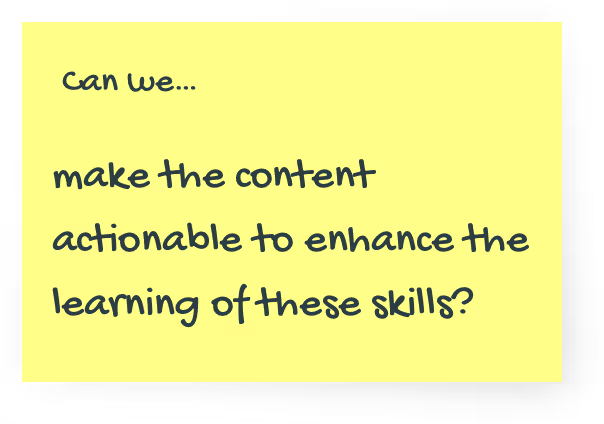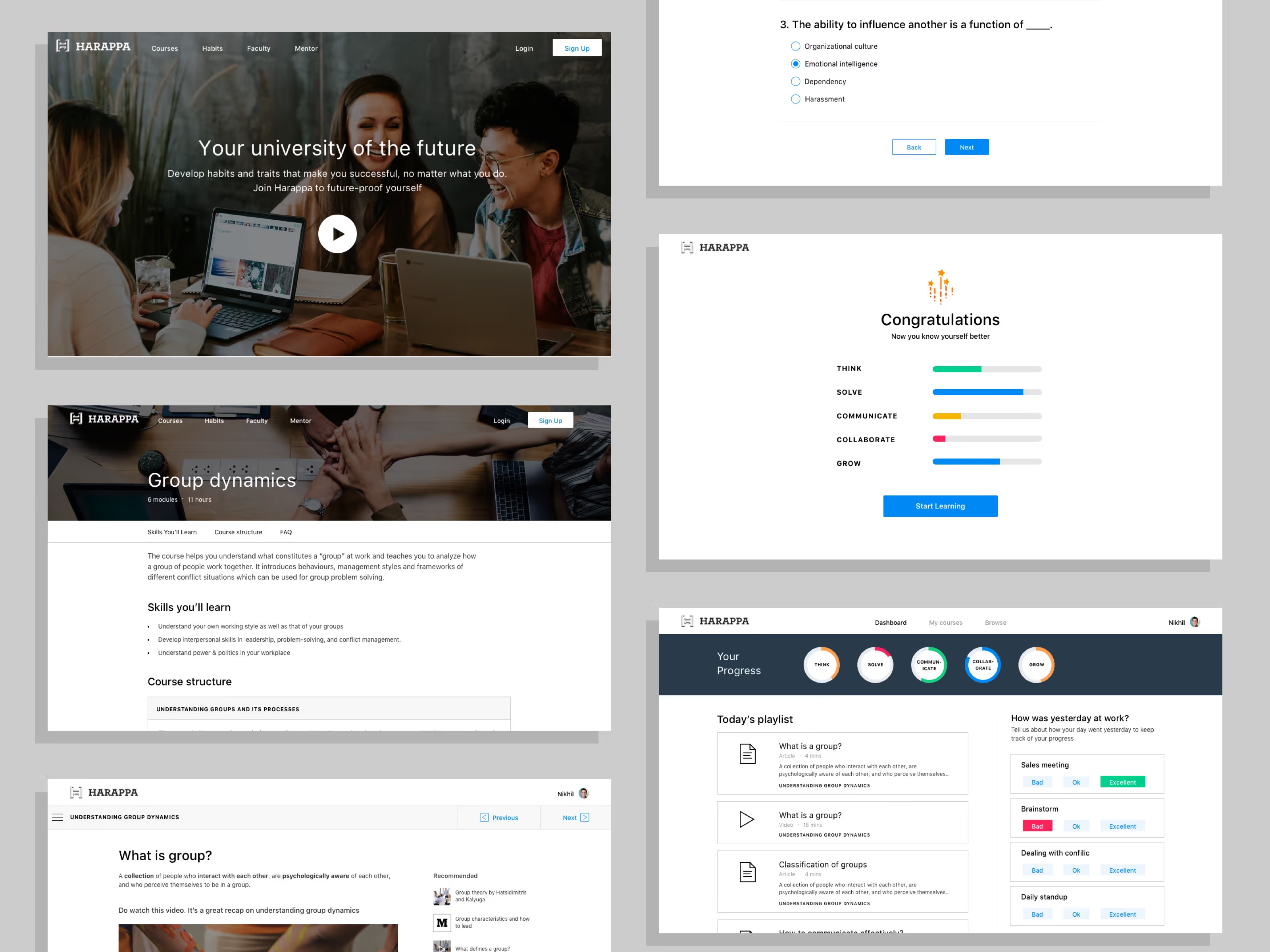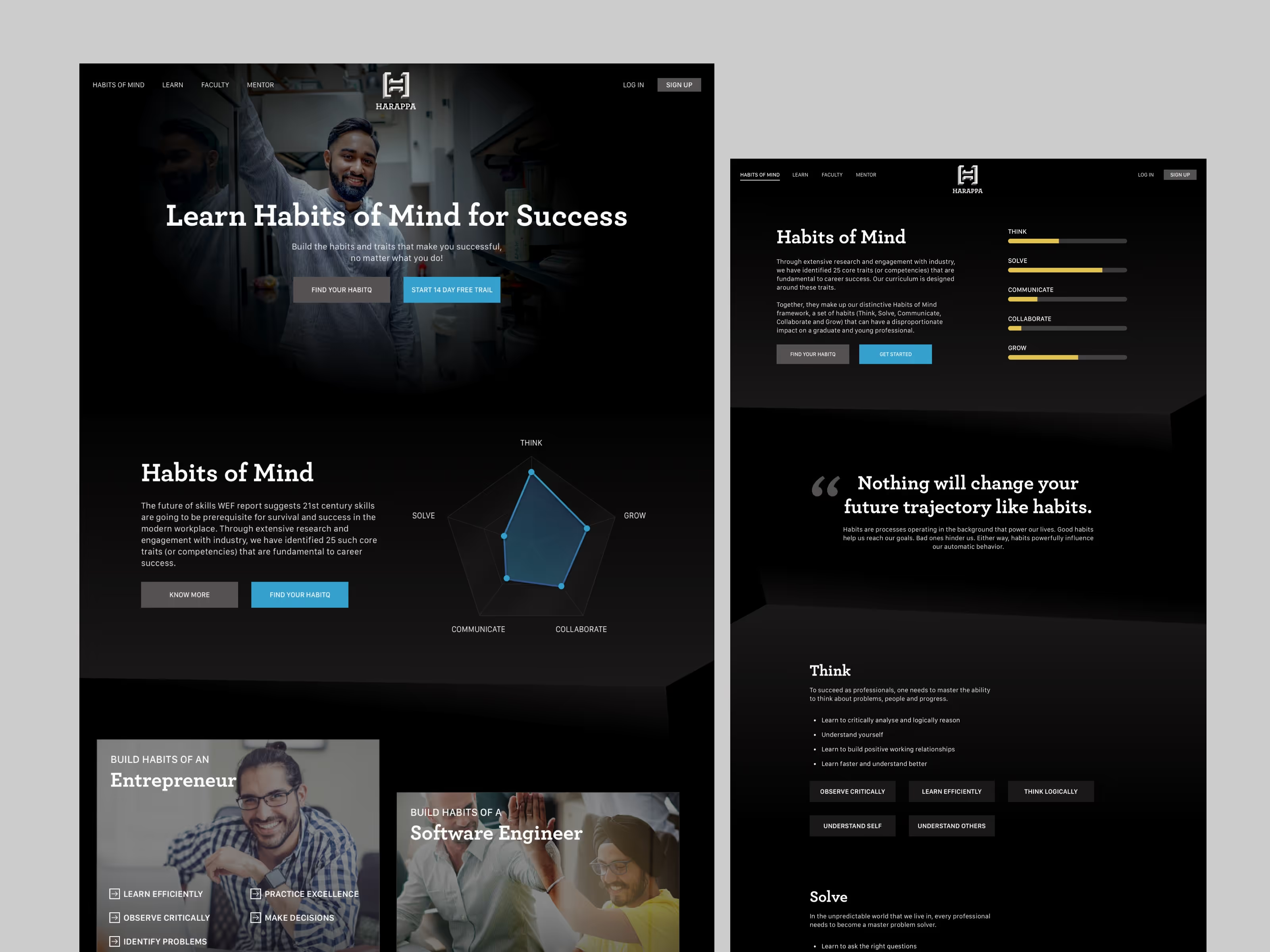
Getting an EdTech
product off the ground
.webp)
Making individuals better professionals
Harappa is aiming to solve the problem of professionals having the technical skills required for their job but struggling to deliver on the fundamental workplace skills expected of them. Harappa says their work begins where formal education ends.
Their approach is to help professionals combine their technical skills with cognitive, social and emotional skills. Harappa intends to achieve this via its unique Habits of Mind framework and 25 Workplace Skills.
Harappa reached out to Parallel to help define, design and validate the first version of their product. The sprint team included Paramath Raj Sinha (Founding Dean, ISB) and Shreyasi Singh (CEO, Harappa).
Challenges
Since the product was at the concept stage, we began the expert interviews with discussions around the product vision and the problems that we were trying to solve.
Harappa was inspired by the experience of Pramath Raj Sinha in nurturing top talent at India’s most prestigious management institution (ISB, Hyderabad) as its founding dean and in setting up Ashoka University.
Here are some interesting insights that were revealed during the expert discussion:
- Lack of workplace skills is the number one problem that frustrates companies with their teams and professionals.
- Most academic institutions fail to give students practical experiences and perspectives to develop workplace skills.
- Developing these workplace skills is a lifelong process, and an approach needs to make learnings actionable.
- Harappa’s secret sauce in approaching this problem was combining academic rigour with practical expertise.
Aligning on our goals
This helped us identify key opportunities to solve during the design sprint.
.avif)



Then we set out to define a product goal to align the team on common objectives. The team decided on their 2-year goal.
.avif)
We then worked with the team to define sprint questions, which we would check during the user testing.




After we did expert interviews and identified key priorities for the design sprint, we worked on defining the 2-year goal and sprint questions.





After a clear alignment on the product's goal, problems to solve, and questions to be answered during user tests, we worked on mapping the challenge. We started with the first touchpoint of discovering the product right to the final goal, “User becomes a more valued professional”.
Solution
The team was super excited to start nailing the product by creating concept sketches. We began by sharing our favourite product inspirations that solve the pain points highlighted by the team, and then we moved to sketching.
We built on each other’s ideas and created a storyboard of how the new product workflows should look for a user. It was an intense exercise to align the team to one workflow that everyone believed in and wanted to test.
Prototype, test and iterate
In a day's time, we pulled up our socks and created a clickable prototype of the concept.

We then recruited 5 young professionals from different backgrounds, demographics and different career aspirations. The objective of the user tests was to see if the product strikes a chord with users, whether they would pay for it, and if they found the product experience engaging.
Our results from the user tests were mixed:
Hits
- Users loved the Habits of Mind framework and could relate to traits that they need to improve.
- Finding the individual Habit Quotient and self-assessment was a super hit.
- Users found the content style with practical expertise very engaging.
Misses
- We didn't nail explainability well. Worlds like “university” and “flagship programme” were confusing. People needed explanation to understand what the product does.
- The product needed better, modular packaging to appeal to respective audiences and their goals.
We went back to the drawing board and did an iteration sprint to make the product better and fix issues we discovered in the first week. In the second round of testing, most of the problems were fixed, and the results were positive overall. Summarizing the feedback from users in the second round of testing:
“Can I join the programme right away?”
All users understood the product positioning and could
relate to how it would help them become better and valuable professionals.
“I can relate to the Habits of Mind and Traits I need to work on.”
80% of the users understood the Habits of Mind
framework and could relate to what the product had to offer.

In 2 weeks, we managed to translate raw ideas into high-fidelity, user-tested prototypes of the product. This helped give the team the confidence and data they needed to go ahead and build the product.
Book a 60 min Strategy Call with our founders

A laser-focussed call to discuss your product goals/challenges and how can we help.
.webp)
12 yrs of experience in UX Design and helped clients like Meta, Equifax and Delhivery
.webp)
15 years of experience and has data led digital transformations for Unicorn Startups